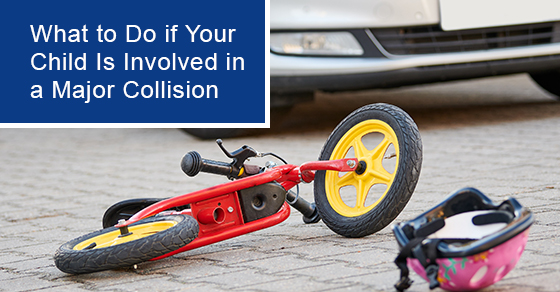
What to Do if Your Child Is Involved in a Major Collision
Posted by
on
Mar 09, 2022 in
It’s the middle of the night when you suddenly get woken up by a phone call: it’s your child, and they have just been in a car accident. While most parents hope that they never receive this call, it’s undeniable that driving comes with its risks. Unfortunately, most teenagers are not equipped to handle the aftermath of a car accident. It’s important that you, as the parent, can support them and guide them through what may be a traumatic experience. Here are the most important steps you and your child should take following a car accident.
Avoid Panicking
Make sure your child does not drive away from the scene of the accident. They are likely overwhelmed, shocked, scared, and/or angry after the crash. Try your best to help them calm down, so they are better prepared to handle the stress of the situation. For example, ask them to take deep breaths or count to ten.Keep Themselves and Others Safe
Ask your child if they can drive the vehicle. If there are no injuries and the car is still driveable, make sure they move the car out of traffic to avoid other damages and possible injuries. However, if they cannot get out of the vehicle, or if it’s not safe to do so, ask them to keep their seatbelt fastened, turn on their hazard lights, and call 911 for help.Check For Injuries and Call The Authorities
Your child should check on everyone involved in the accident. Note that not all injuries are visible. If your child or anyone involved starts feeling unwell, call 911. Your child should be ready to give the dispatcher key information, including:- Their name and phone number
- Details about the emergency. For example, if there is a fire or a medical emergency.
- The location of the emergency. The dispatcher needs to know exactly where your child is. Ask your child to give as much information as possible, including the road name or number, travel direction, and the nearest exit number.
Take Detailed Photos and Notes
An accurate record can help the court and insurance agencies decide which party is responsible. Your child must take detailed written notes and photos of the accident scene, which may include:- Description of the vehicles involved- for example, year, make, model, and colour
- Direction of travel
- The exact location of the crash
- Date and time of the crash
- Weather and road conditions
- Photos of all vehicles involved in the crash
- Pictures of all four sides of your child’s vehicle post-collision
- Close-ups of any damage on the cars and public property
- Licence plate numbers of all involved vehicles
- Contact information of any witnesses
Exchange Drivers Information
If the police responded to the accident, the investigating officer at the scene will obtain all relevant information and provide your child with a police report number. Your child can use this number to get an accident report later and file an insurance claim. If the police did not respond to the accident, ensure your child exchanges information with the other driver, such as:- Name
- Telephone number
- Licence number and class
- Name of the insurance company
- Insurance policy number

